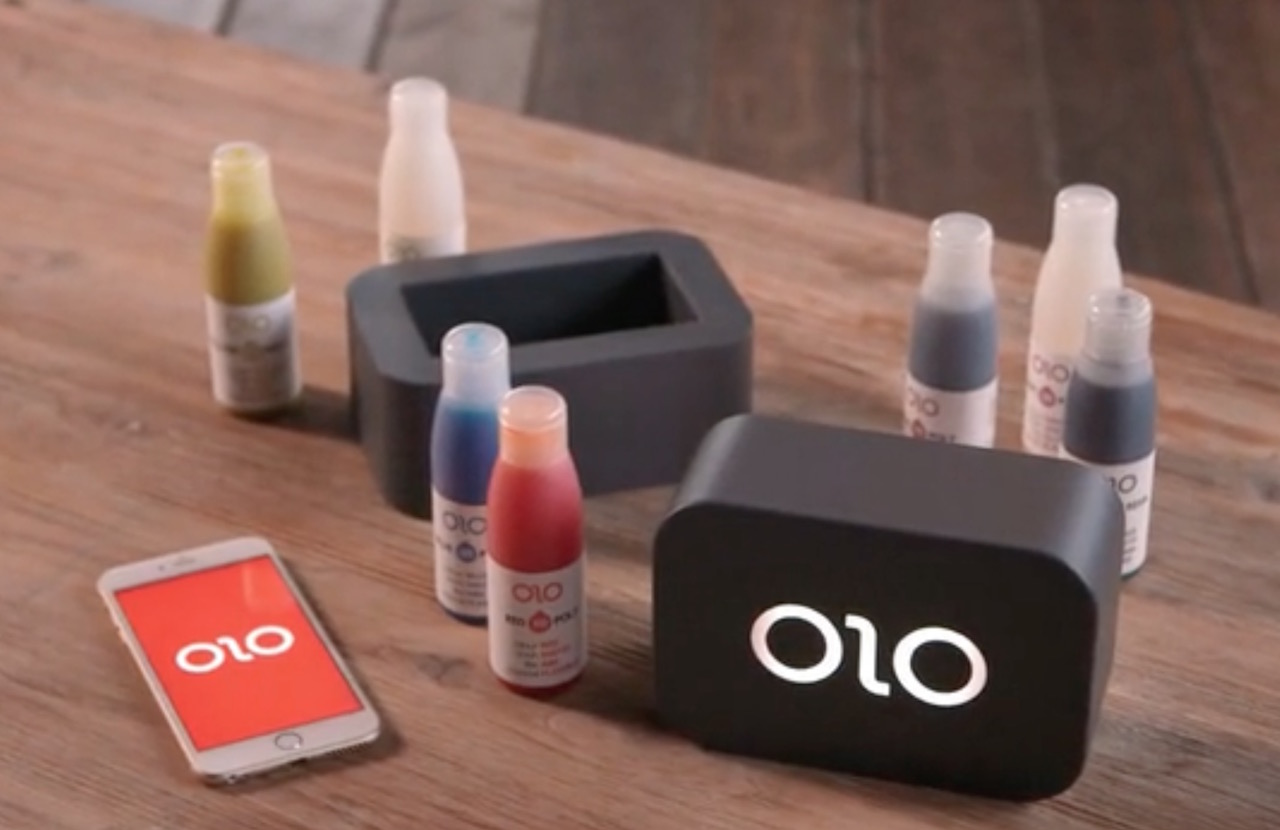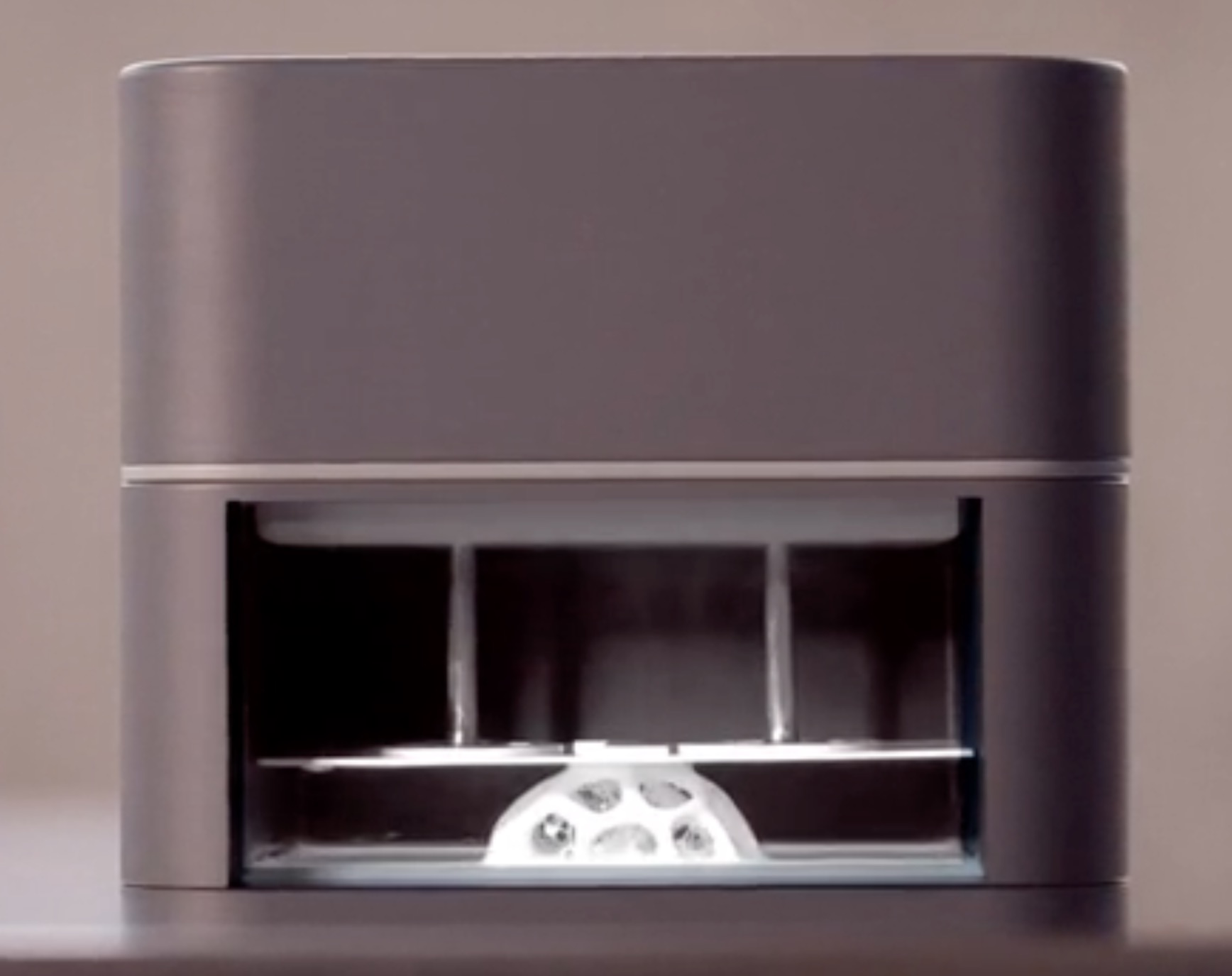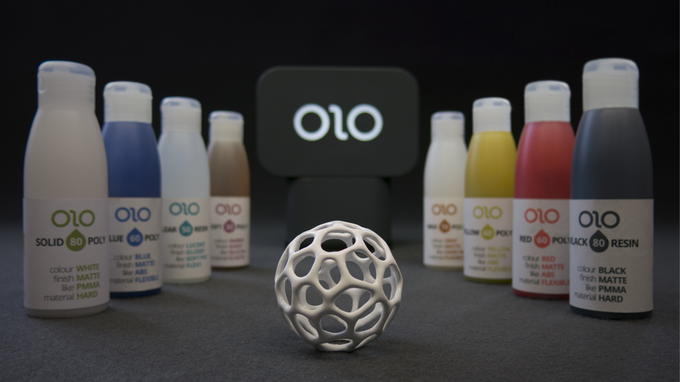A spectacularly successful Kickstarter campaign by the new Olo 3D printer illustrates a division between buyers in the 3D printer market.
The Olo is a curious device: it’s a tiny resin 3D printer that uses a common smartphone as its light engine. Typically resin 3D printers employ pricey lasers or DLPs to do this, but Olo takes advantage of the fact that you probably already have the hardware to perform the light engine work – in your smartphone.
The Olo is made from two parts: one is the resin tank that sits on top of your upward-facing smartphone. The other part rests on top of the lower portion and provides the mechanical movement of the build platform.
Here’s how it works: An app on the smartphone sequentially displays light images of each layer for the print. The battery-powered Olo build platform raises up for each layer, and material is gradually solidified on the bottom to create a complete 3D object. Once printed, you need only peel the print off the build platform and wash it with water to finish the job.
Here’s the most important part: the Olo is priced at only USD$99, a price the company can achieve because you’re supplying the most expensive part of the hardware, the light engine.
Certainly the print volume of this device is quite small, on par with lower-priced industrial high resolution resin 3D printers: 76 x 128 x 52mm. Printing is reasonably fast, again similar to other resin printers at 46 minutes per 1 cm (or 13mm per hour) when using a bright display smartphone like the iPhone 6. Less bright smartphone will print more slowly, as there are fewer photons per second to cure each layer. Layers can be between 0.200 and 0.035mm, which is a good mix between very high resolution and rapid, draft printing.
Olo has provided a number of interesting resins for use in the device, including solid, flexible, translucent, elastic and wax-like for casting. Each resin is provided in a 100ml bottle priced at USD$15 each. This is USD$100 per liter for reference, and a not-unreasonable price considering the small bottle size and competitive resin pricing.
However, Olo says you may use only their resin in the machine, perhaps due to the formulation being tied to printing parameters. However, I would definitely expect many Olo users to use many different kinds of resin in this machine, as there doesn’t seem to be any technical constraints stopping one from doing so.
The question is, “is the Olo for you?”
One thing to remember is that when you are printing, you will necessarily have to disable your normal phone functions. You’re going to be completely offline when printing. This is why I suspect you may want a second phone for use with the Olo, if you can afford one.
If that sounds ridiculous, it might be. Think about it: this machine is designed to print very occasionally, when you are not using your phone. It’s for casual consumers who have some interest in 3D printing but don’t want to afford the cost of more traditional machines.
Along that line, Olo has produced a number of promising associated web features that allow users to quickly pick and share 3D models for printing, in an attempt to overcome the content problem often found with 3D printers.
While you could produce useful prints on the Olo, I suspect it’s going to be viewed often as a kind of sophisticated toy for consumers. Those doing more serious – and frequent – 3D printing would be far better off spending more money on a larger machine.
That said, the device seems to be extremely popular, with their Kickstarter campaign now exceeding USD$1M in orders – suggesting they’ve sold over 10,000 units. For any small startup, such a quantity will be challenging to deliver – and they will likely add in quite a few more orders before they finish the campaign.
Will one of those orders be yours?
Via Olo3D and Kickstarter





